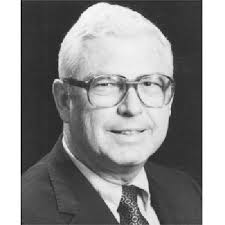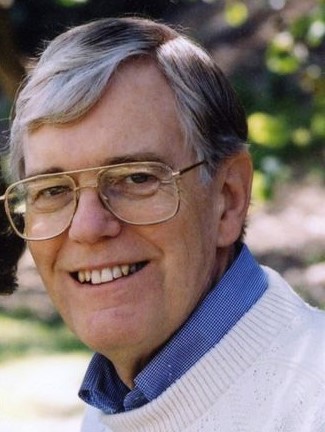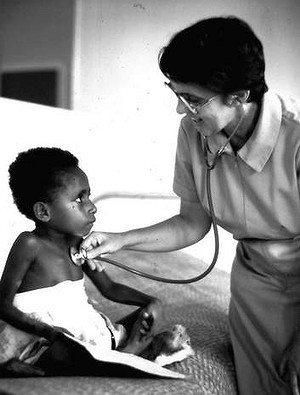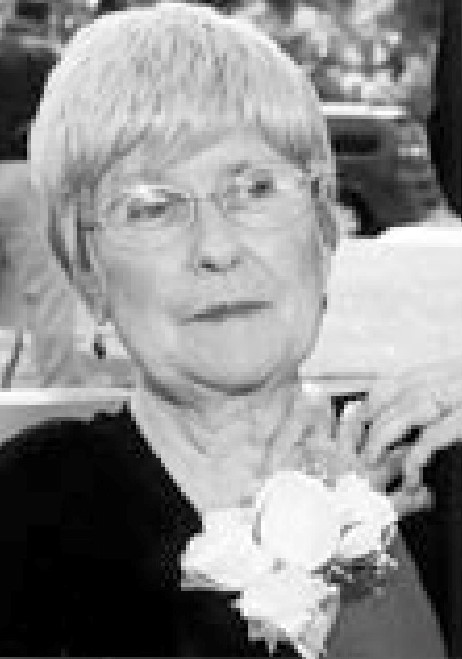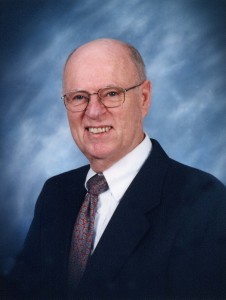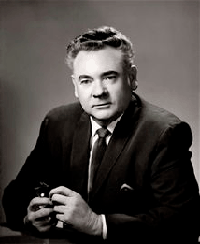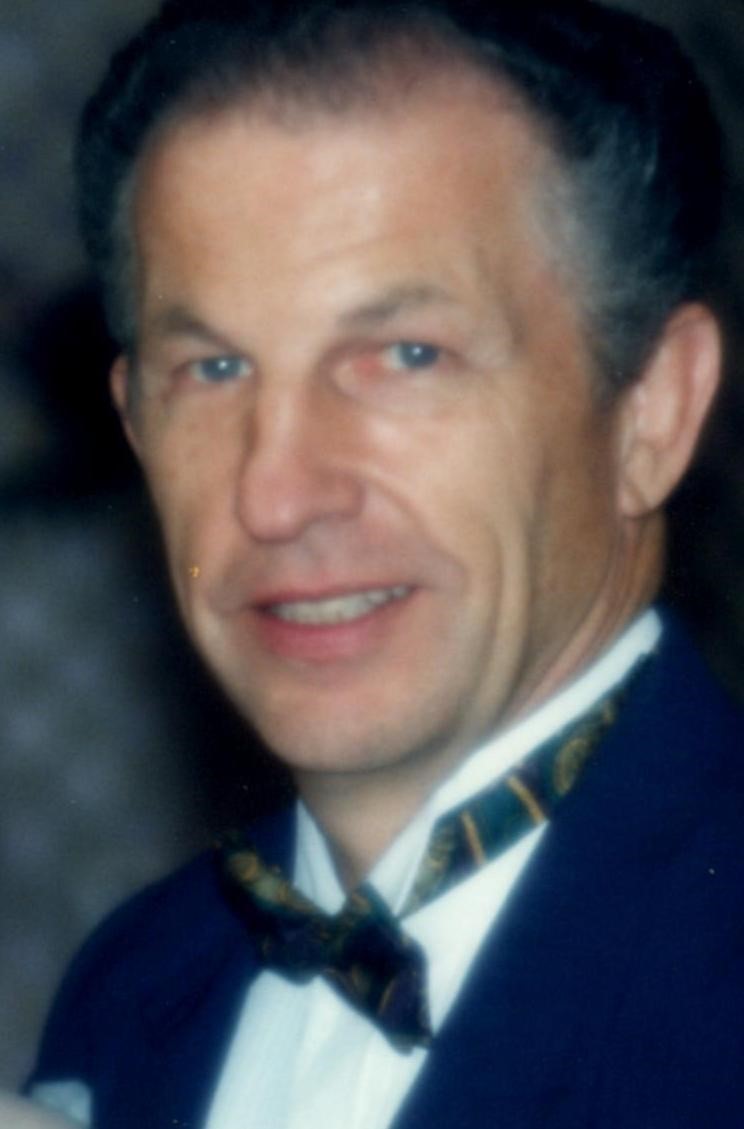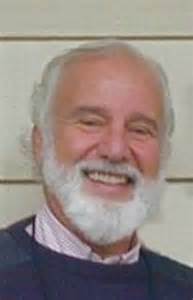Friendships and Consultations
.
A loyal friend is a powerful defense:
whoever finds one has found a true treasure.
A loyal friend is something beyond price,
there is no measuring his/her worth.
A loyal friend is the elixir of life,
and those who fear YHWH will find one.
Ecclesiasticus 6, NJB
*****
We are writing to member care workers and all those with member care responsibility within international mission/aid who identify with the historic Christian faith. We write to encourage us all to stay the course in our service to God and humans and to take full advantage of the many opportunities to provide and develop member care. We write fully aware of the problems that can discredit, divide, and disable the church-mission community (CMC) and all of our member care efforts. We write with a commitment to the love that is necessary to resolve these problems and to promote health within the global CMC.
.
Where were you in September 1998? We were in Oxford, where the above photo was taken. Twelve international colleagues met in Oxford, UK for three days to discuss the development of member care, Participants were from seven countries and four continents. One key outcome was the formation of the Member Care Task Force (MemCa) as part of the World Evangelical Fellowship (Alliance). This helped set the stage for future MemCa work, including forming relationships, convening consultations, and doing projects. At this first MemCa consultation, we took time for developing our friendships (and having some fun!). We stayed together at a lovely English manor (Stanton House), and in addition to discussing the serious matters at hand, we visited C.S. Lewis’ house together and we walked together along the Thames River after an enthralling Evensong service.
.
Above photo, left to right: John Powell (USA); Melody Min (Korea), Paul Ralph (USA), Naomi Famonure (Nigeria), Betty Lou Pollock (USA), Marcia Tostes (Brazil), Kelly O’Donnell (UK/USA), Pablo Carrillo (Spain/Mexico), Ken Gamble (Canada), Michele Lewis O’Donnell (UK/USA), Dave Pollock (USA)
.
In April of this year, the first major international member care consultation will be convened (major in terms of size). We are really looking forward to the gathering of so many people from so many places and backgrounds. To help prepare for it, here are several historical notes-quotes over the past 20 years. We highlight two of the central and overlapping aspirations that routinely appear in the docs: a) the commitment to developing the member care field via solid relationships and strategic projects; and b) the commitment to intentionally meeting around the world to “knit the net” of member care colleagues and ultimately convening a major international consultation.
.
Notes and Quotes
1992
“ I believe there are three necessary steps for launching member care in a more coordinated direction….Step two is to convene a major member care conference which will attract participants from various countries and organizations….Finally I am convinced that the time has come to actively pull together the various pockets of member care workers around the world. It is also time to systematically train and mobilize many others for this strategic ministry. And the time is here for anointed leaders to step forward and help steer this field in response to the Lord’s direction.” An Agenda for Member Care in Missions, Missionary Care (1992, pages 294, 297)
.
1993-1994
The first of several member care consultations for the Middle East region (Cyprus) and for the North Africa region (Spain) took place in these years, in association with regional mission partnerships.
.
 1995
1995“The current effort to reach the world’s unreached peoples requires hardy folk who are willing to work together, make sacrifices, become vulnerable, and serve the lord wholeheartedly in the midst of stressful situations. But understand this as well: it also necessitates a concomitant, cooperative effort to undergird the missionary personnel involved in these demanding endeavours” On Behalf of the 10-40 Window of the Heart, International Journal of Frontier Missions (special issue on member care, page 169).
.
1996
“There is a need to deliberately join together with a core group of like-minded colleagues in order to further develop the member care field, especially within frontier missions…We must develop a ‘macro model’ of member care….In short, we would be an interagency, informally affiliated group of friends, who are highly committed to work together on consensually-derived, cutting edge member care projects which will be of direct, strategic benefit to those serving in frontier missions.” For Everything There is A Season…And a Summons (July 1996, pages 1, 2; email-letter sent to many colleagues).
.
1997
 Examples from 1997: Meeting on member care (pastoral care) for Latin American workers at COMIBAM II in Acapulco Mexico; and forming the Asia MC-MK group at the Asia Mission Congress II in Pattaya, Thailand (photo is of the member care people who met, with significant involvement and direction from Met Castillo and Polly Chan)
Examples from 1997: Meeting on member care (pastoral care) for Latin American workers at COMIBAM II in Acapulco Mexico; and forming the Asia MC-MK group at the Asia Mission Congress II in Pattaya, Thailand (photo is of the member care people who met, with significant involvement and direction from Met Castillo and Polly Chan).
1998
“Here is a brief summary about our current thinking [for developing a member care task force, initially referred to as MECA]…. 3. We want to develop relationships within MECA, based on both friendship and task. ….4. We sense that MECA is to complement and encourage the different facets of member care throughout the world….6. Here are some of the main contributions MECA can make: a. Convene an international member care consultation—the first of its kind—before or after the WEF Mission Consultation on Missiology, to be held in Brazil October 10-16, 1999...Colleagues from around the world would be invited.” Summary of the first member care meeting with Dave Pollock at the home of Michèle and Kelly O’Donnell in Oxfordshire, UK, 1-3 April 1998, pages 1, 2)
.
1998
“We think a primary way forward for MemCa is to work alongside Asians, Africans, and Latin Americans to support them in developing appropriate member care resources for their respective regions and to encourage them to share their resources and experience with the global missions community. MemCa will thus be truly an international effort….Who are the missing faces from our MemCa group? Representatives from India, Central Asia, the Chinese World, the Arabic World, and Eastern Europe. …It will likely take “five years to “knit the net” at the regional level and the global level—to develop some basic member care resources to fill in important gaps….Potential Projects [seven:] 5. Convene a global member care consultation, possibly in three years time.” Summary of the first MemCa Consultation, Oxford, UK, September 1998)
.
1999
Above photo: Second MemCa Consultation in October 1999 in Brazil, following the Latin American Member Care Consultation. Photo, left to right: Kelly O’Donnell, Dave Pollock, Esly Carvalho, Ken Grant, Marcia Tostes, and Marjory Foyle
.
2000
“The Member Care Task Force (MemCa) is an affiliation of international colleagues committed to help develop member care resources within missions…members are also committed to provide personal/professional support for each other as needed. Our friendship and Christian fellowship provide the foundation for our joint work…. Working Together: Projects: Help establish and strengthen member care affiliations—national/regional groups, strategically located member care hubs, and Partnership working groups….5. Convene a global member care consultation, and smaller more informal gatherings/retreats.” (Member Care Task Force and Global Network—Guidelines, pages 1, 2)
.
Photo above: Working together to establish and strengthen member care affiliations—The special member care meetings at Mission Africa, Abidjan, Ivory Coast, 2000.
.
2001
“We believe the Lord was really with us, guiding us, and strengthening both our friendships and our joint efforts….2. Here is a brief report on our overall agenda items that we had proposed to cover: …. c. The need for member care consultations and efforts in the Newer Sending Countries, especially Africa, India, etc…. We want to support each other as we go after projects related to our overall MemCa goals….12. Consider planning an international member care consultation (this has been one of our goals but we have not made any plans).” Summary of the third MemCa Consultation, held in Port Dickson, Malaysia 2001, pages 1, 2,4)
.
Participants: Belinda Ng—Singapore, Sarah Yap—Malaysia Beram Kumar—Malaysia, JJ Ratnakumar—India, Pramila Rajendran—India, Harry Hoffmann—Thailand, Steve Burgess—Philippines, Susan Burgess—Philippines, Tonica van der Meer—Brazil, Naomi Famonure—Nigeria, Marjory Foyle—UK, Hartmut Stricker—Germany, Kelly O'Donnell—France, Bruce Narramore—USA, Kathy Narramore—USA, Dick Gardner—USA, Brent Lindquist—USA, Dave Pollock—USA. And there were two guests: Mike Culy—USA, Bill Mauger—USA.
.
MemCa members who could not come: Marina Prins--South Africa, Ken Grant—Ecuador, Esly Carvalho—Ecuador, Marcia Tostes—Brazil, Don Smith--New Zealand, Ruth Myors—Australia, Kath Donovan—Australia, Laura Mae Gardner—USA, Friedhilde Stricker—Germany, Michele Lewis O'Donnell—France.
.
2002
“Doing member care well helps us to do missions well. Here is an update about a group of 30 international colleagues who are working together to develop member care around the world. By “member care” we mean the investment of supportive resources to help mission personnel (including home office staff and children) remain healthy and effective, from recruitment through retirement…. Members are also committed to provide personal/professional support for each other as needed. Our desire is for our friendship and Christian fellowship to provide the foundation for our joint work…. Working Together and Projects….5. Convene a global member care consultation within the next two years, and help organize smaller gatherings/consultations at the regional level.” Global Member Care Resources, 2002 description for WEA-MC Connections journal, page 2)
.
2003
“In our first issue (October 2001) we looked at the crucial importance of developing working relationships and personal friendships with one another in member care ministry. In the February 2002 issue, we explored the nature of 21st century networks, observing that they have a unifying purpose, independent members, voluntary connections, multiple leaders, and multiple levels. Then in the July 2002 issue, we listed 10 core principles (taken from chapter 48 in Doing Member Care Well) to help form and maintain member care affiliations…. The final item we would like to share is a list of some thoughts that can help us all "kit the net" together more.” Member Care Network Briefing, February 2003, Number 6, pages 1, 2)
.
2003
 “Thirty member care colleagues met in Vancouver, Canada for our MemCa Consultation, over a six day period. The Consultation was part of a broader conference on globalisation, sponsored by the WEA Missions Commission. This was our fourth such Consultation since MemCa was launched in 1998. Our purpose for meeting in Vancouver included: Relationships—building closer friendships among ourselves and the Missions Commission…We spent several hours listening to different members share updates and issues about member care within their regions….12. Additional Projects This last item is actually a grouping of various projects that were either discussed in Vancouver or else have been discussed in the past. We include them here as they are important to keep track of and pursue. g. We want to continue to link with other networks outside of the Evangelical missions world, such as the international health care and humanitarian aid communities. h. We have had discussion in the past about organising an International Member Care Consultation. There has been no further progress on this idea.” Summary from the MemCa Briefing 2006—Global Member Care Resources Consultation (MemCa) 31 May—6 June, 2003 Vancouver, Canada
“Thirty member care colleagues met in Vancouver, Canada for our MemCa Consultation, over a six day period. The Consultation was part of a broader conference on globalisation, sponsored by the WEA Missions Commission. This was our fourth such Consultation since MemCa was launched in 1998. Our purpose for meeting in Vancouver included: Relationships—building closer friendships among ourselves and the Missions Commission…We spent several hours listening to different members share updates and issues about member care within their regions….12. Additional Projects This last item is actually a grouping of various projects that were either discussed in Vancouver or else have been discussed in the past. We include them here as they are important to keep track of and pursue. g. We want to continue to link with other networks outside of the Evangelical missions world, such as the international health care and humanitarian aid communities. h. We have had discussion in the past about organising an International Member Care Consultation. There has been no further progress on this idea.” Summary from the MemCa Briefing 2006—Global Member Care Resources Consultation (MemCa) 31 May—6 June, 2003 Vancouver, CanadaParticipants: Africa: Karen Carr, Darlene Jerome (Ghana), Naomi Famonure (Nigeria), Dirk Visser (RSA); Asia: Pramila Rajendran (India), Belinda Ng, Gracia Wiarda (Singapore), Harry Hoffmann (Thailand), Philip Chang (Malaysia), Byun-Moon Kang, Grace KS Lim (Korea); Australasia: Murray Winn (New Zealand); Europe: Anke Tissingh, Rosangela Amado (Spain), Kelly O’Donnell (France), Siny Widmer (Switzerland), Annemie Grossshauser, Hartmut and Friedhilde Stricker (Germany), Marion Knell, Marjory Foyle (UK), Arie Baak (The Netherlands), The Americas: Marcia Tostes (Brasil), Dave Pollock, Brent Lindquist, Richard and Laura Mae Gardner, Bruce and Kathy Narramore, Denny Milgate (USA)
.
2004
“1. Help establish and strengthen member care affiliations and regional consultations…International Member Care Conference. Still an option but no clear way forward. May want to hold one on different continents. For now there is the sense that we need to focus on/strengthen Asia and Africa regions first. One idea though was for an International Consultation in April/May 2007 as part of the European MC Consultation, in The Netherlands. (Discuss this broadly and inclusively with those inside and outside of MemCa).” MemCa Projects and Updates, June 2004—June 2005 (these action points emerged from the overall and ongoing goals for MemCa, since 1998; page 1)
.
2005
 “Global Faces facilitates personal and professional relationships between member care workers. We do this primarily by inviting qualified colleagues to participate in strategic member care gatherings around the world. Phase One: including several MCWs from NSCs to participate at PTM in the USA and EMCC in Europe; Phase Two: inviting experienced MCWs to attend regional NSC member care/mission gatherings; Phase Three: involving several groups to convene international member care consultations on different continents.” Global Faces Brochure (a proposed joint project with MemCa and other organizations)
“Global Faces facilitates personal and professional relationships between member care workers. We do this primarily by inviting qualified colleagues to participate in strategic member care gatherings around the world. Phase One: including several MCWs from NSCs to participate at PTM in the USA and EMCC in Europe; Phase Two: inviting experienced MCWs to attend regional NSC member care/mission gatherings; Phase Three: involving several groups to convene international member care consultations on different continents.” Global Faces Brochure (a proposed joint project with MemCa and other organizations).
2006
“In MemCa we build ongoing relationships in order to support quality people with strategic influence who are doing quality projects with strategic impact. We prioritise four "clusters of projects" which we call our "Four Directions"…. Direction One: Strategic Gatherings (Connections). Global Faces. Connect influential member care workers (MCWs) from the A4 regions with international MCWs at specific consultations around the world, including UPG partnerships.” MemCa description prepared for the fifth MemCa Consultation, South Africa, June 2006
.
2006
“MemCa is an affiliation of international colleagues (currently about 20) committed to help develop member care resources within the mission/aid community. Our members come from different organisations and churches, and represent various geographic and speciality networks in member care. We are a “partnership of networks” and the networks connect to MemCa via their leaders/liaisons who are part of MemCa. Our special emphasis is on working together and with others to support personnel from the A4 regions (Asia, Africa, Arabic-Turkic, America-Latina), and those working among UPGs (unreached people groups). Members are also committed to provide personal and work-related support for each other as needed. Our growing friendship and Christian fellowship provide the foundation for our joint work.” MemCa is part of the Mission Commission of the World Evangelical Alliance (WEA).” Member Care Briefing, June 2006, Number 17
.
2007-2010
“Our reticence to tackle “tough stuff” is even more apparent when the stakes are raised and we are faced with the choice of whether or not to confront serious deviance and evil…Your task is to be true, not popular…espouse virtue and expose evil.” High-Virtue Humans, CORE Member Care, 25 January 2010; retrieved from:
http://coremembercare.blogspot.com/search/label/virtrios Detail, The Descent from the Cross,
by Rogier van der Weyden, circa 1435
. “The Global Member Care Network is excited to announce the First Global Member Care Conference…The heart of the conference is to create a platform to hear global voices about member care in a borderless world, which is characterized by increasing hostilities and schisms. The environment that workers are serving in is getting harder, more dangerous, more challenging, more persecution, more risks, and more suffering. We need to hear how workers can overcome these challenges and thrive in their lives and their ministries. Out of this gathering we will see great opportunities for networking, sharing our stories and resources, and learning to care for His workers effectively.” Global Member Care Conference –Global Voices on Global Challenges, 23-27 April 23-2012, Chiangmai, Thailand. (retrieved from the Global Member Care Network website:
.
Kelly and Michèle
.
Reflection and Discussion
In light of the above notes-quotes: Share a few thoughts about forming international friendships in member care and/or convening international consultations in member care.--past, present, future.
